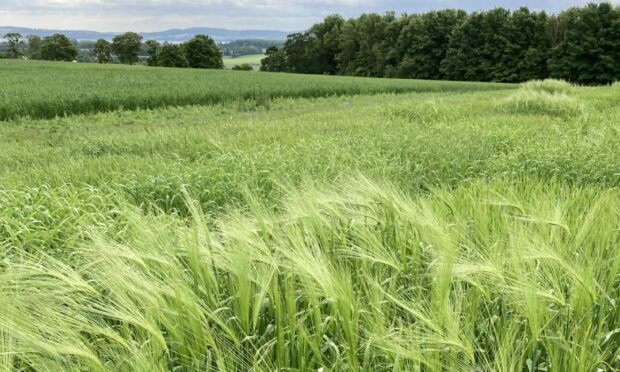An ancient barley variety, grown only on Unst, Shetland, is at the heart of new genome sequencing research focused on using its unique traits to help restore crop production to certain types of marginal soils around the world.
The variety, known as Bere Unst barley, could also have an expanded commercial future as a local heritage ingredient in the making of specialist Shetland whiskies.
Researchers at the James Hutton Institute, Dundee, have been working with Bere Unst since 2007, carefully multiplying an original small seed sample up into a usable crop size.
The latest twist in the variety’s potential return to productive life, however, featured a knowledge exchange trip to Germany for a team from the Hutton’s Invergowrie campus.
“Bere barleys show better growth and yields under manganese deficient soils in comparison to commercial cultivars,” said Dr Miriam Schreiber, a cereal bioinformatics specialist at the Hutton, adding that Bere Unst itself has been shown to grow better than commercial cultivars on marginal soils found on the Scottish Islands.
“A specific Bere genome will be invaluable as it will allow us to explore its underlying genetic mechanisms. This could then help us to introduce these traits into elite varieties to be able to use them on what would otherwise be marginal soils. These ancient barleys also have different unique flavours, making them of obvious interest for distilleries to use in the production of high quality, heritage products.”
The research team’s visit to Germany was designed to allow them to learn a state-of-the-art computational method for assembling plant genome sequences, as developed by scientists at the Leibniz Institute of Plant Genetics and Crop Plant Research (IPK) in Gatersleben.
In return, the Hutton team ran a training workshop at IPK on transcriptome data analysis, featuring the collection of Ribonucleic acid (RNA) molecules ‘expressed’ by plant genomes.
Following their knowledge exchange experience, the Hutton team’s sequencing work will focus on extending the currently published barley pan-genome, which records all existing genetic information across the entire barley species.
With the barley pan-genome being largely restricted to cultivated barleys until now, it has been recognised for some time that further work is needed to explore the ancestors of today’s cultivated varieties. This is where Bere Unst may have a part to play.
Currently, Hutton’s researchers are not aware of any farmers growing Bere Unst barley, although they are keen to hear from anyone who is.
“Most of these ancient or heritage varieties are only stored in gene banks,” said Joanne Russell, a geneticist at The Hutton.
“Apart from Bere Orkney, which is registered as a conservation variety and is only available through Orkney College, there are no other beres currently ‘commercially’ registered or grown on scale.”












